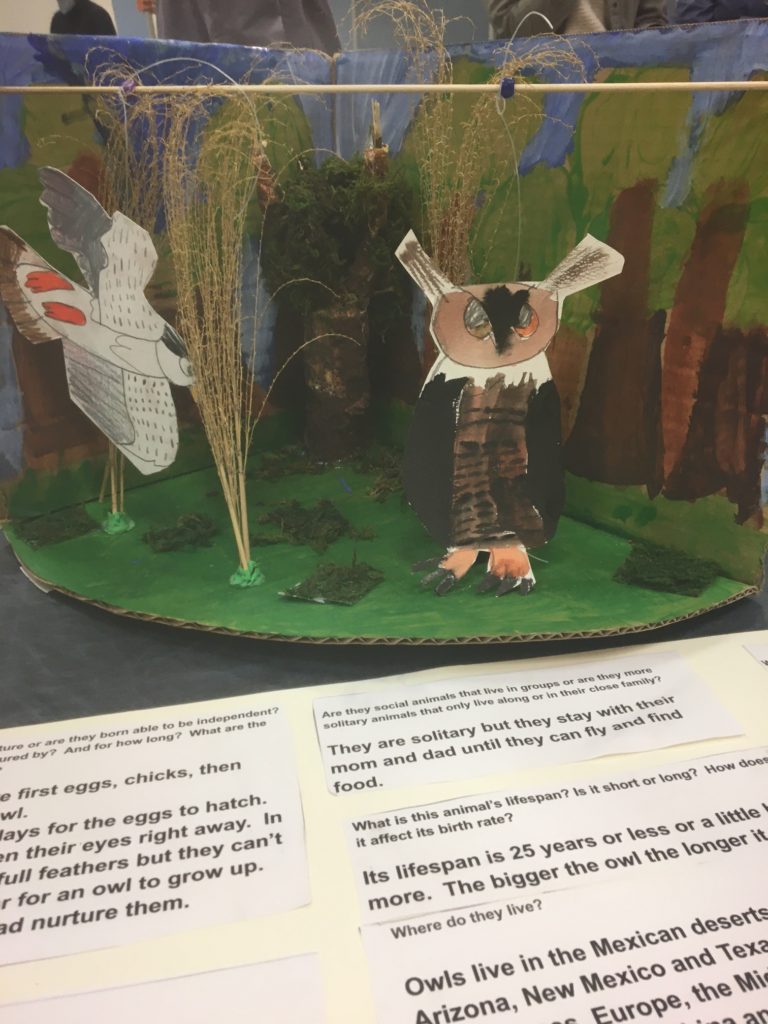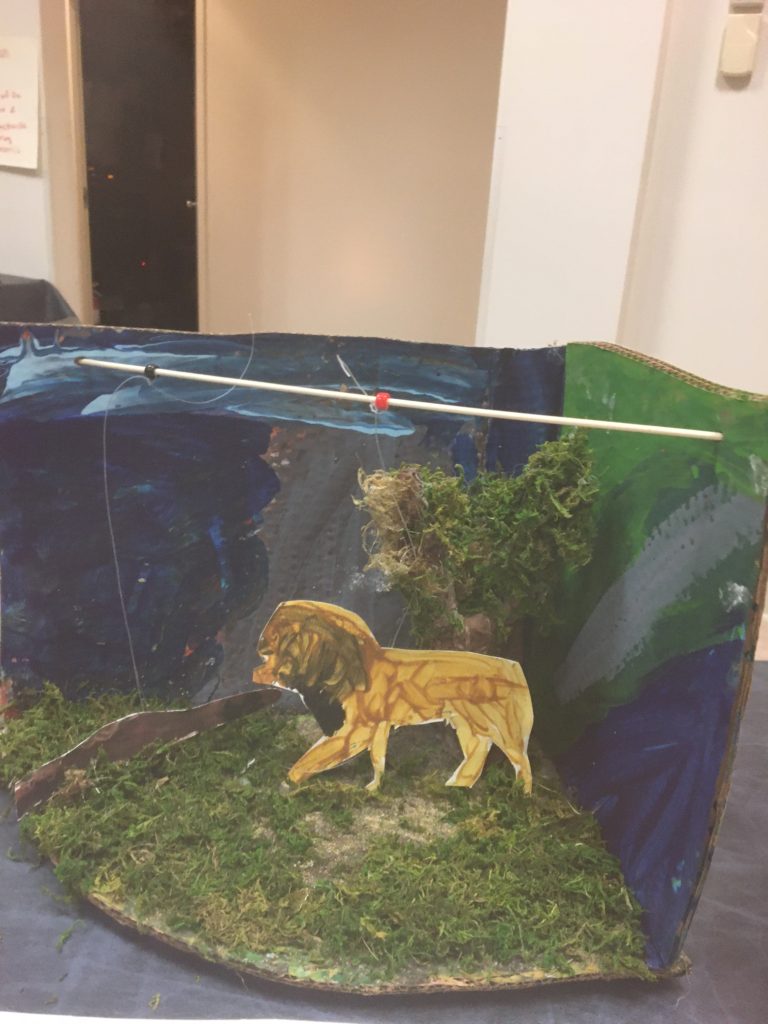
This year was the continuation of an animal class that had begun 2 years ago. Many of the activities of the class continued through this year. However, we had several new students join us and our group size became 11 children. We continued to read books and have discussions on Wednesday mornings at snack. As we ended our reading sessions, we finished with a tongue-in-cheek book that proposed that dinosaurs were still among us. While we all understood the humour of the picture book, showing dinosaurs in the Urban Jungle sitting at a cafe…there were some of our students who had some niggling thoughts that perhaps…maybe???? And the discussion of evidence that arose was worth having and brought up the lovely question of whether there is evidence for unicorns?
This group of young people had now learned to read and we were ready to challenge them to read nonfiction for information. Children picked three animals and we began the search for appropriate books hoping to find at least 2 books for one of their choices. We had started our read-aloud this year with The Life and Times of the Ant by Charles Micucci. It is a simple picture book, but allowed us to ask 9 questions on a chart, which we filled out together after reading the book.
This provided our first time researchers with the questions they would try to answer as they both read their books and hopefully watched 2 videos at home. Each of the students received a ring of index cards with one question per card and easily stepped into reading during either their contract time or Sustained Silent Reading. As was to be expected, reading and decoding was the easy part. But reading for specific questions and finding answers was much more difficult. Adult support was needed and provided as children wrote general responses and then went back to their books with support to look for some of the details they needed. As always, we took our time.
Meanwhile during our Thursday morning animal dictionary time, children continued or started dictionary books, drawing and painting or using pastel pencils, of animals for each letter (although sometimes it was just toooo tempting to have two or three animals with the same letter).
As their research on cards began to wind down, a teacher typed the cards. Part of the process for many of the students became turning answers into sentences. It was also yet another chance to look to see if there was information missing as well as edit.
During this time we had a fun large group mayhem, looking for photographs of the animals they had researched. By that time, we had a list of all the animals the group had studied and everyone shared looking for photos of their animals and their friend’s animals.
Making a poster with both the photos and their typed answers became the next project. Making a poster required them to practice using a ruler to make the straight lines around their typed answers in order to cut them out. All the bazillion pieces needed to be kept in their own plastic bags with the photos. Next was practicing the idea of layout….how to make the words and the photos fit and readable on their poster board. It was lovely to see the inventiveness that often arose at that moment when they wanted to make everything fit.
We were getting close to our Science Fair by then and each child needed to practice reading ( or referring, hopefully) to their poster and presenting to classmates. It was a great time for discussion and awe at some of the amazing adaptations their creatures had developed.
Next students filled out a sheet listing what was needed for their animals habitat. What were their predators? Or prey/food?
What did ALL animals need no matter where they lived? After discussion, for sure, food, air, water, protection and a safe place for their babies. Then they needed to draw and paint their animals for their habitat.
FINALLY, we were ready to build their habitats…They referred to their sheets they had filled out and painted parts as 2D and then decided what parts would they like to make 3D. A highlight for many was learning to use plaster gauze to create trees and caves. Going outside to collect plant life was an added treat. But for everyone, the whole process was one of excitement and mutual support from everyone to all their cohort.
After the Science Fair, a chart was made with all of the information from each of their posters for each question. We spent two snack times comparing the need or lack of need for Nurture, and Class. And whether they are endangered, at risk or extinct. Each child read about their animal from the chart and then we discussed what they thought.
It was wonderful to watch both new and oldtimers grow during the time of the project. And we knew we were making progress when we heard children tell others, “Take your time, there’s time here, no rush.”
